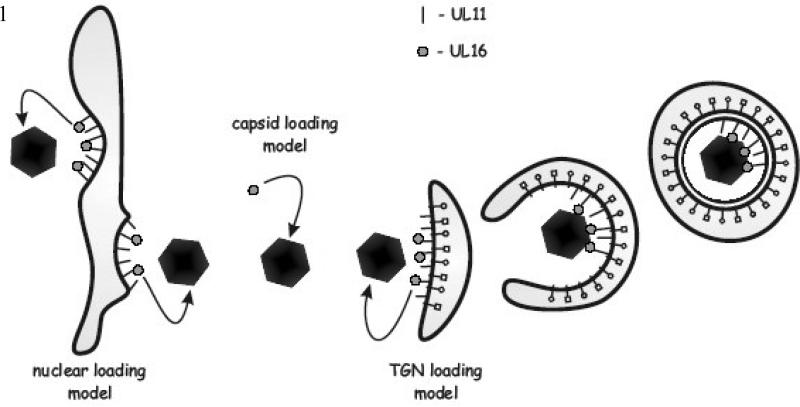FIG. 1.
Potential UL16 packaging mechanisms. Mature DNA containing C-capsids exit the nucleus of infected cells via a budding then fusion mechanism across the nuclear envelope. It is at this step during the assembly process that UL16 could be loaded onto capsids through its direct interaction with the membrane-bound UL11 protein that is present on the nuclear envelope (nuclear loading model). Following exit from the nucleus, non-enveloped capsids transverse the cytoplasm and provide another potential location for the incorporation of UL16 (capsid loading model), possibly through an interaction with the capsid-bound UL21 protein. And finally, cytoplasmic capsids reach TGN-derived membranes where the final budding event is orchestrated. It is here that capsids acquire additional tegument proteins and their full complement of glycoproteins. Since UL11 targets to these membranes, it could bring UL16 to this location for packaging into virus particles (TGN loading model).

